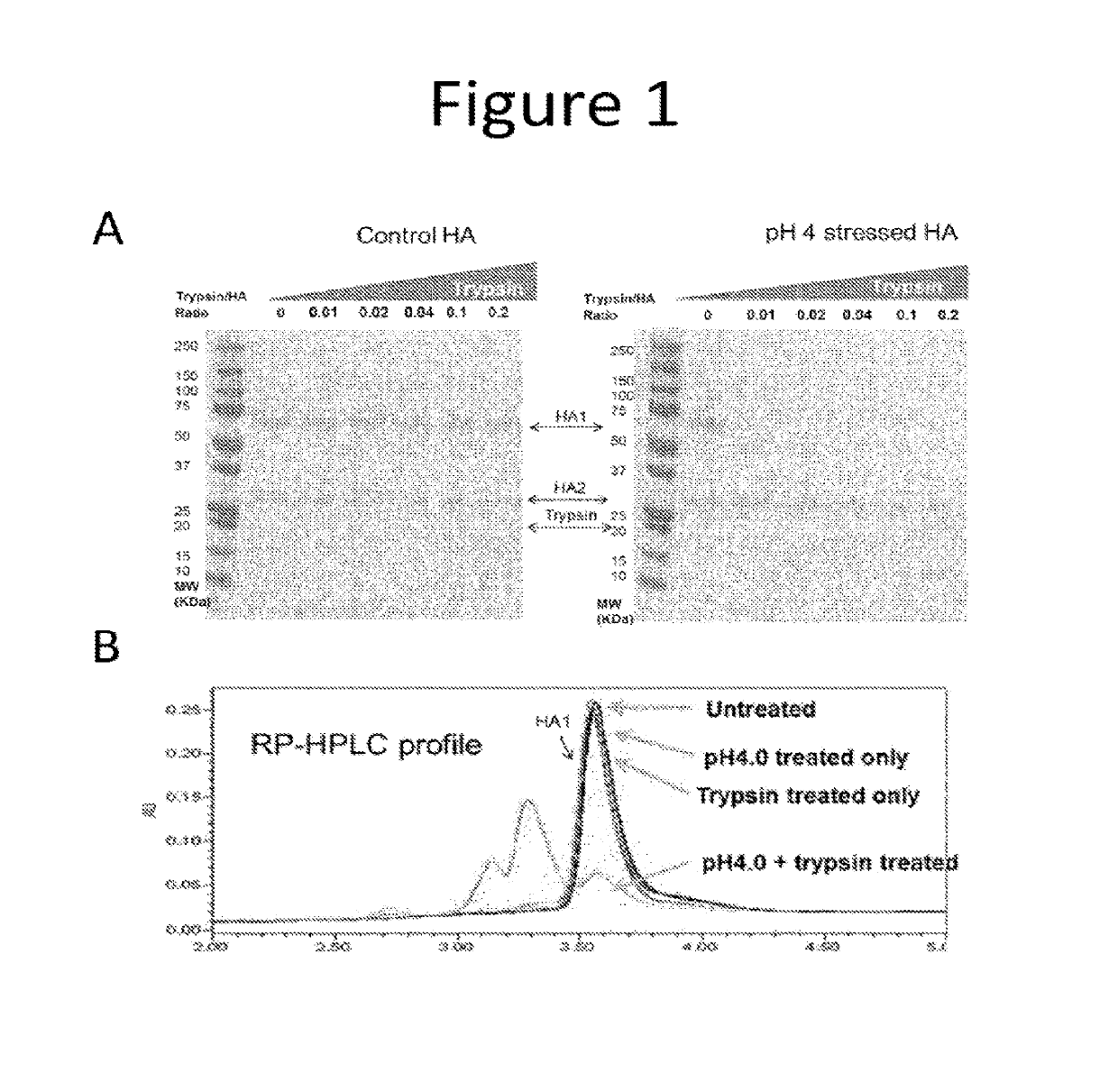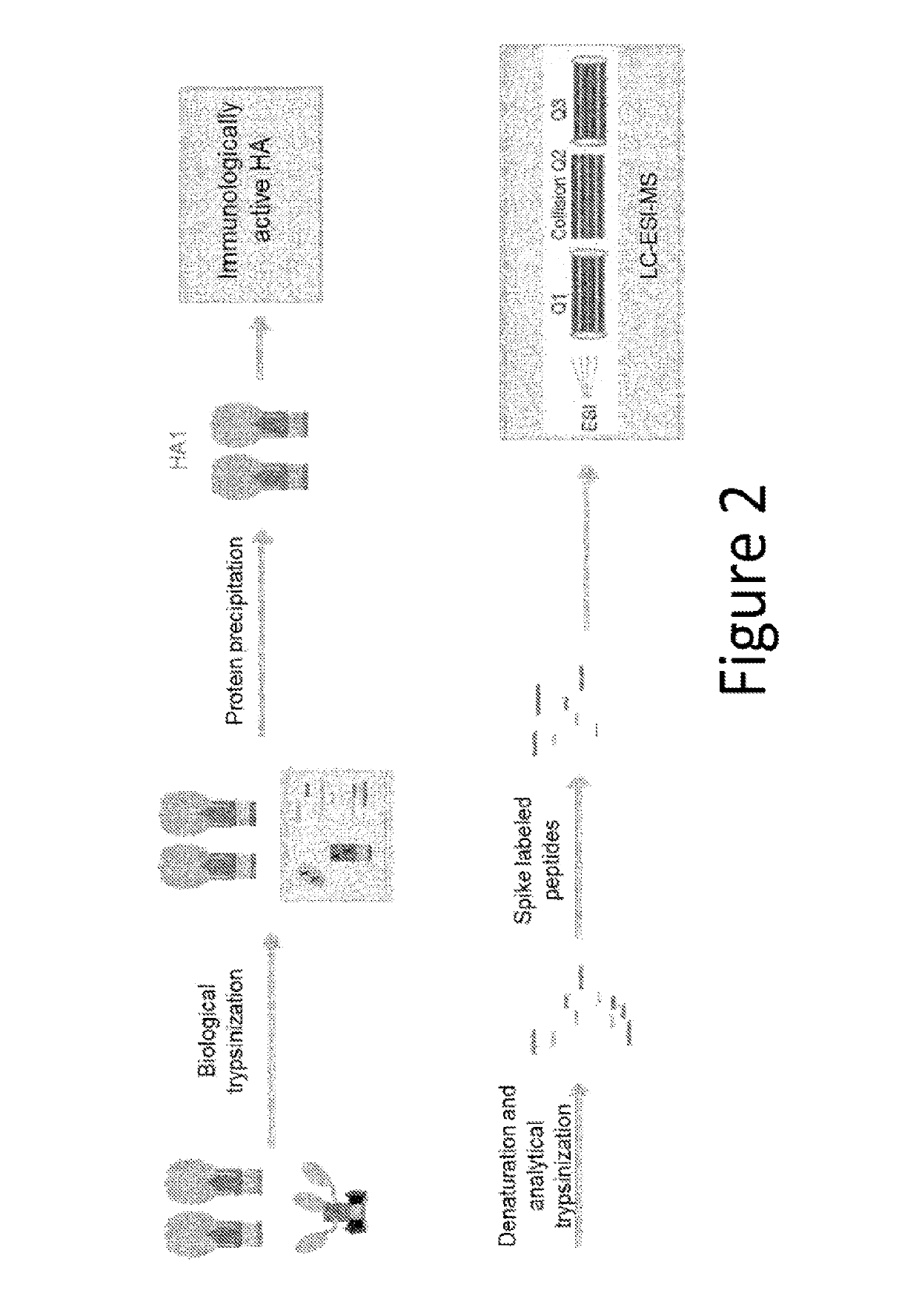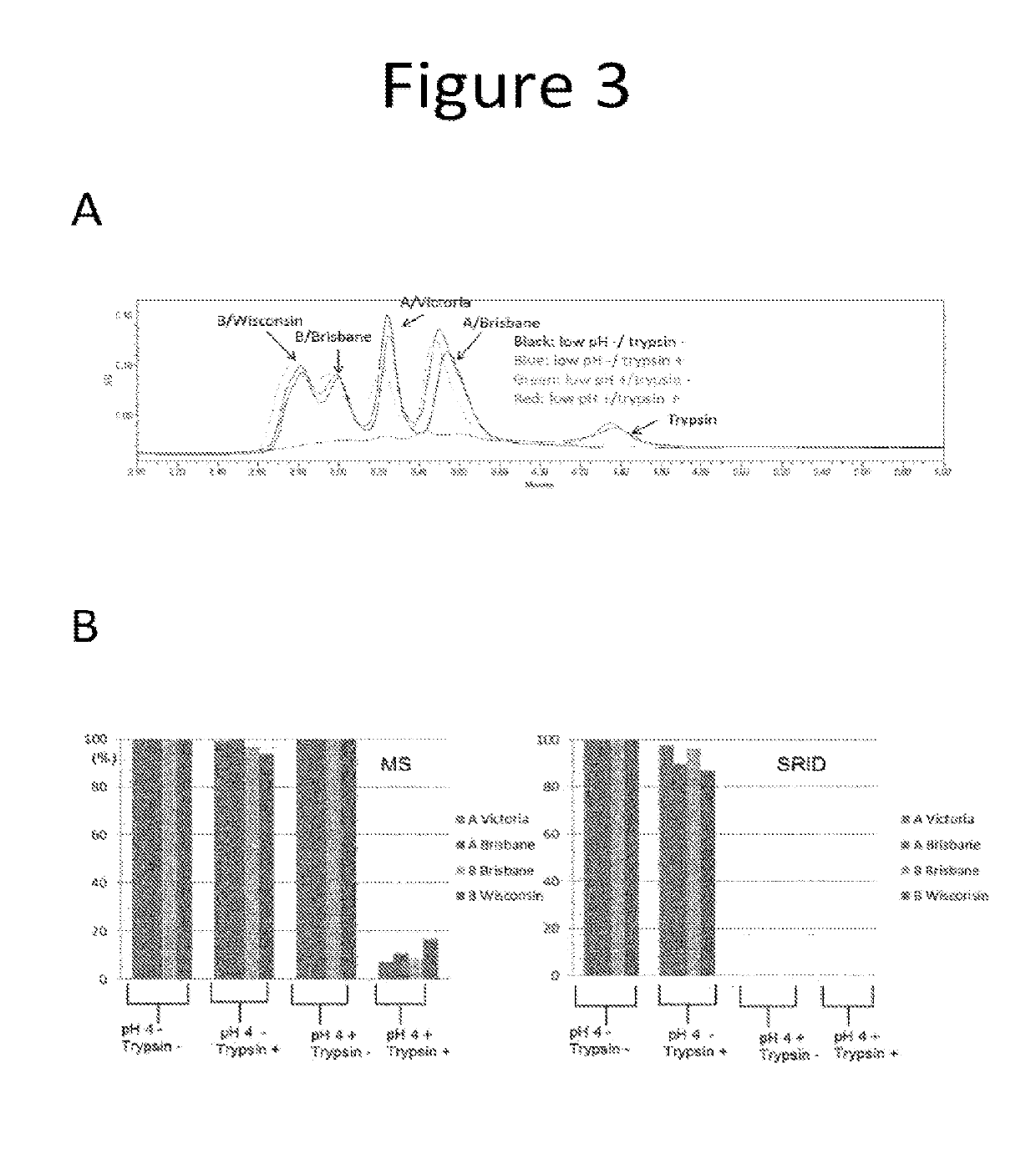Influenza potency assays
a technology of influenza vaccine and assay, applied in the field of vaccines, can solve the problems of poor dynamic range, long preparation time, and inability to accurately detect the effect of influenza, and achieve the effect of improving the accuracy and accuracy of the assay
Active Publication Date: 2019-09-17
SEQIRUS UK LTD
View PDF4 Cites 0 Cited by
- Summary
- Abstract
- Description
- Claims
- Application Information
AI Technical Summary
Benefits of technology
The present invention aims to solve the problem of inaccurate measurement of influenza virus antigens in vaccines using conventional methods. The invention proposes an assay based on biophysical measurements to distinguish the structural difference between active and inactive conformations of influenza proteins. The methods provided allow vaccine manufacturers to accurately indicate the amount of immunogenic antigen in their vaccines, which is important for public health. The invention offers an improved SRID assay incorporating a step of biological proteolysis prior to SRID, which improves accuracy in determining the amount of immunologically active HA in a sample. The invention also provides faster and simpler ways to measure influenza virus potency, which is important for manufacturing highly effective vaccines.
Problems solved by technology
Although the SRID assay is well established, it is slow to perform, has poor dynamic range, is susceptible to considerable variability, and it can take a long time to prepare and calibrate the required specific anti-HA serum.
As the influenza strains in vaccines change every season, this creates a bottleneck for influenza vaccine lot release because these reference reagents need to be prepared and calibrated anew for every strain change.
This is particularly problematic in the case of an influenza pandemic where influenza vaccines need to be prepared as quickly as possible.
Another drawback of the SRID assay is that it may not reliably distinguish between immunogenically active forms of the influenza hemagglutinin (HA) antigen and those which are not as immunogenic because the antisera used in the assay may not be completely specific and may react with both forms, although it is generally thought that such antisera can be adjusted to preferentially recognize the native, immunogenic form in the SRID assay (ref.
These assays could accurately quantify total HA and did not depend on strain-specific antisera, but failed to differentiate immunologically active HA from inactive HA.
8), which significantly increases the time needed before the vaccine can be released.
Method used
the structure of the environmentally friendly knitted fabric provided by the present invention; figure 2 Flow chart of the yarn wrapping machine for environmentally friendly knitted fabrics and storage devices; image 3 Is the parameter map of the yarn covering machine
View moreImage
Smart Image Click on the blue labels to locate them in the text.
Smart ImageViewing Examples
Examples
Experimental program
Comparison scheme
Effect test
embodiment 1
3) The method of embodiment 1, wherein the undigested immunogenic HA of step (d) is in a stressed form.
embodiment 3
4) The method of embodiment 3, wherein the stressed form of undigested immunogenic HA is obtained by exposure to a pH below 6.5, a pH above 7.5, a temperature above 50° C.; or freeze-and-thaw.
embodiment 4
5) The method of embodiment 4, wherein the low pH is below pH 6.0.
the structure of the environmentally friendly knitted fabric provided by the present invention; figure 2 Flow chart of the yarn wrapping machine for environmentally friendly knitted fabrics and storage devices; image 3 Is the parameter map of the yarn covering machine
Login to View More PUM
| Property | Measurement | Unit |
|---|---|---|
| pH | aaaaa | aaaaa |
| pH | aaaaa | aaaaa |
| temperature | aaaaa | aaaaa |
Login to View More
Abstract
The present application discloses stability-indicating potency assays for influenza vaccines.
Description
[0001]This application is a national stage filing under 35 U.S.C. § 371 of International Application No. PCT / EP2016 / 066200, filed on Jul. 7, 2016, which claims priority of European Patent Application No. 15175765.5, filed Jul. 7, 2015, and European Patent Application No. 16152829.4, filed Jan. 26, 2016. The contents of these applications are each incorporated herein by reference.SEQUENCE LISTING[0002]The instant application contains a Sequence Listing which has been filed electronically in ASCII format and is hereby incorporated by reference in its entirety. Said ASCII copy was created on Mar. 25, 2019.FIELD OF THE INVENTION[0003]This invention relates generally to vaccines, more specifically to assays for influenza vaccines.BACKGROUND TO THE INVENTION[0004]Recent outbreaks of influenza highlight the need to rapidly produce and release adequate amounts of influenza vaccines to protect the general public from this disease, which has potentially deadly complications.[0005]The standard...
Claims
the structure of the environmentally friendly knitted fabric provided by the present invention; figure 2 Flow chart of the yarn wrapping machine for environmentally friendly knitted fabrics and storage devices; image 3 Is the parameter map of the yarn covering machine
Login to View More Application Information
Patent Timeline
 Login to View More
Login to View More Patent Type & Authority Patents(United States)
IPC IPC(8): G01N33/68A61K39/145C12N7/00G01N33/569
CPCG01N33/6848C12N7/00G01N33/56983A61K39/145G01N2333/11C12N2760/16051C12N2760/16034G01N30/02G01N27/62G01N27/447A61K39/12A61P31/16C12N2760/16134G01N30/7266G01N2030/8831G01N2458/15
Inventor WEN, YINGXIASETTEMBRE, ETHANWANG, ZIHAO
Owner SEQIRUS UK LTD
Features
- R&D
- Intellectual Property
- Life Sciences
- Materials
- Tech Scout
Why Patsnap Eureka
- Unparalleled Data Quality
- Higher Quality Content
- 60% Fewer Hallucinations
Social media
Patsnap Eureka Blog
Learn More Browse by: Latest US Patents, China's latest patents, Technical Efficacy Thesaurus, Application Domain, Technology Topic, Popular Technical Reports.
© 2025 PatSnap. All rights reserved.Legal|Privacy policy|Modern Slavery Act Transparency Statement|Sitemap|About US| Contact US: help@patsnap.com



